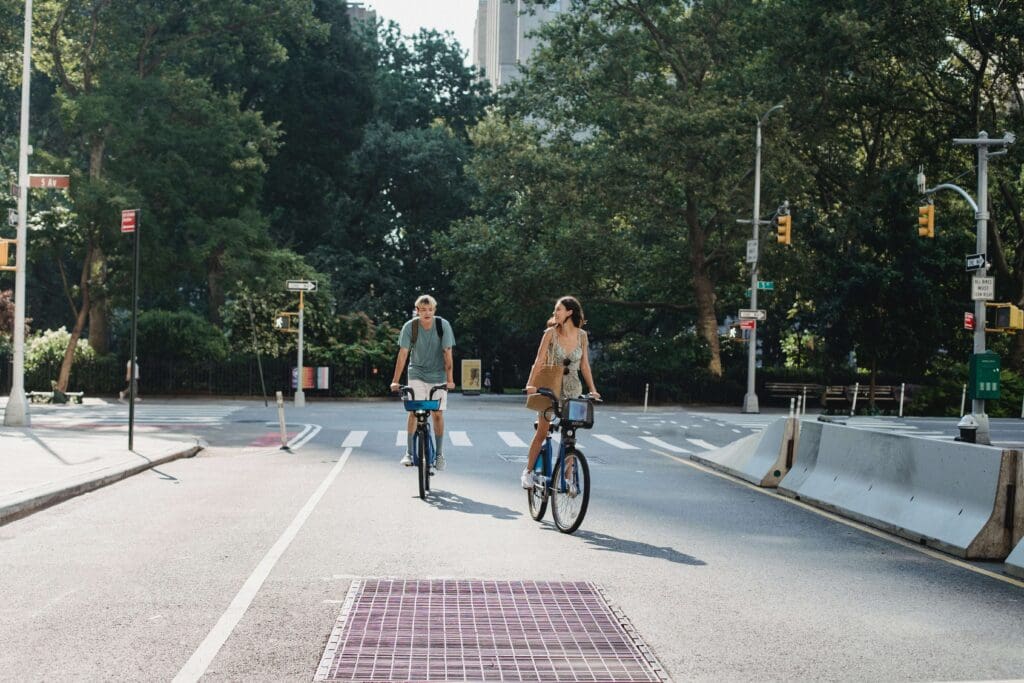
The Intersections Initiative turns one this month! One year ago, In September 2022, America Walks teamed up with the Safe Routes Partnership and League of American Bicyclists to create the Intersections Initiative. The goal: make federal programs for walking and biking infrastructure in the Bipartisan Infrastructure Law more approachable for community leaders and local governments. What has happened in that first year?
Gather the facts, get the word out
The Intersections Initiative was born of the idea that the historic level of funding contained in the Bipartisan Infrastructure Law needs to be connected with the outsized demand for walking and biking infrastructure across the country. Thanks to the Bipartisan Infrastructure Law, Transportation Alternatives Program funding is at an all-time high, starting with $1.3 billion in 2021. New programs like Reconnecting Communities and Safe Streets and Roads for All also fund walking and biking infrastructure. But not every community that wants sidewalks, bike lanes, and active transportation infrastructure knows the ins and outs of these programs if they’re even acquainted with them at all.
So our first goal was to gather the facts and get the word out. The Safe Routes Partnership and the Bike League developed Transportation Alternatives Funding fact sheets for all 50 states that we could then share with local governments and community champions to help them better understand and leverage the opportunity for increased funding.
We then worked to disseminate broadly the information about programs like Transportation Alternatives and Safe Streets and Roads for All. Webinars for national audiences and small, more targeted ones at the state level provide introductory information and help get the word out to local government officials and community champions looking to learn more.
Working with community champions and local government
For that type of official or community champion, there’s the Intersections Initiative website, a portal to reach out, talk through a project they’re working on, and determine what sorts of federal funding would be most approachable for it. We fielded over 60 requests for more information and talked to a wide variety of communities interested in building walking and biking infrastructure. This ranged from a network of librarians in Iowa who wanted to make their institutions hubs for active transportation, to a planning department in a small town in North Carolina that knew it needed to make its streets safer but didn’t know where to start, to a group of advocates in Maine working with their city to determine whether they had the necessary Safety Action Plan to apply for Safe Streets and Roads for All implementation funding.
The Initiative also worked more closely with a handful of communities. In Arizona, the Initiative partners strengthened Pinnacle Health, a state-wide public health organization, in its work with the Arizona Department of Transportation. With this support, ADOT held its first-ever competition to award $27m of Transportation Alternatives funding, $16m of which is going to small, rural, and tribal areas that are often passed over when it comes to funding.
What’s in store for next year?
The Intersections Initiative is still active, so if you’d like to share more about the infrastructure project you’re working on and learn more about the possible federal funding opportunities that would move it closer to implementation, then reach out!
Want to learn more about the work of the Intersections Initiative over the last year? Check out the presentation we gave to the Physical Activity Policy Research and Evaluation Network.